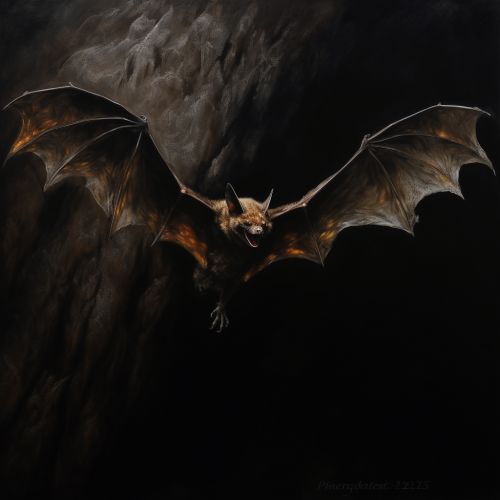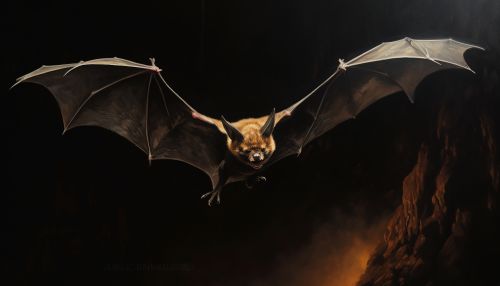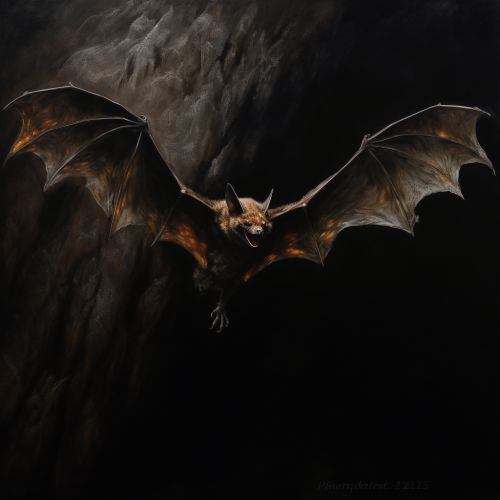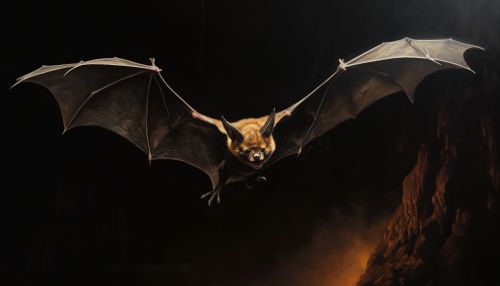Echolocation
Introduction
Echolocation, also known as bio sonar, is a biological sonar used by several kinds of animals such as certain kinds of bats and cetaceans. They emit calls out to the environment and listen to the echoes of those calls that return from various objects near them. They use these echoes to locate and identify the objects. Echolocation is used for navigation and for foraging or hunting in various environments.


Biological Basis
Echolocation is a complex physiological process that allows an organism to navigate its environment by reflecting sounds off of objects in the environment and interpreting the echoes of those sounds. This process is used by several species of animals, including some mammals and birds, and is especially well developed in bats and dolphins.
The fundamental principle of echolocation is that the emitting animal creates a sound and then listens for the echo of that sound. The time it takes for the echo to return to the animal provides information about the distance to the object. The direction of the sound provides information about the direction to the object. And the intensity of the echo provides information about the size and composition of the object.
Mechanism of Echolocation
The mechanism of echolocation varies among different species but generally involves the production of high-frequency sounds, usually in the ultrasonic range, that are reflected back to the animal. The animal then processes these echoes to construct a spatial map of its environment.
In bats, the sounds are produced by the larynx and emitted through the mouth or nose. The returning echoes are received by the ears and processed by the auditory system. Bats can adjust the frequency, duration, and intensity of their calls depending on the specific task at hand, such as navigating through a cluttered environment or hunting for insects.
In dolphins, the sounds are produced by a structure in the nasal passage called the phonic lips, and are focused and directed by a fatty organ in the forehead known as the melon. The returning echoes are received through the lower jaw and transmitted to the middle ear. Dolphins can produce a wide range of sounds, from low-frequency pops to high-frequency clicks, and can adjust the rate and intensity of their clicks depending on the task at hand.
Echolocation in Bats
Bats are perhaps the most well-known users of echolocation. They use this ability to navigate through the night sky and locate their insect prey. Bats emit high-frequency sounds (usually beyond the range of human hearing) and listen for the echoes to determine the location and distance of objects in their environment.
The echolocation calls of bats vary greatly depending on the species and the context in which the calls are made. Some species emit continuous calls and listen for the returning echoes, while others emit calls in short bursts and listen for the echoes in the silent intervals between calls. The frequency, duration, and intensity of the calls can also vary, providing bats with a rich source of information about their environment.


Echolocation in Cetaceans
Cetaceans, which include whales, dolphins, and porpoises, also use echolocation to navigate their underwater environment and locate prey. They emit a series of clicks and listen for the echoes to determine the location, distance, and even some characteristics of objects in their environment.
The echolocation system in cetaceans is highly specialized and sophisticated. The clicks are produced by a pair of phonic lips in the nasal passage and are focused and directed by a fatty organ in the forehead known as the melon. The returning echoes are received through the lower jaw and transmitted to the middle ear. The information is then processed by the auditory system to construct a spatial map of the environment.
Echolocation in Other Animals
While bats and cetaceans are the most well-known users of echolocation, several other groups of animals have also evolved this ability. These include some species of birds, such as the oilbird and the swiftlet, which use echolocation to navigate in dark caves. Some species of shrews and rats also use echolocation, although their systems are not as well developed as those of bats and cetaceans.
Evolution of Echolocation
The evolution of echolocation is a topic of ongoing research. It is believed that echolocation evolved independently in different groups of animals, including bats, cetaceans, and birds. This is an example of convergent evolution, where different species evolve similar traits as a result of facing similar environmental challenges.
The evolution of echolocation in bats and cetaceans is particularly interesting because these animals are not closely related, yet they have developed remarkably similar echolocation systems. This suggests that echolocation is a highly effective strategy for navigating and foraging in environments where vision is limited.
Impact on Human Society
The study of echolocation has had a significant impact on human society, particularly in the fields of biology and technology. The understanding of echolocation has led to the development of sonar technology, which is used in navigation and detection systems in ships and submarines. Echolocation research has also contributed to our understanding of sensory processing and neural plasticity in the brain.
In addition, the study of echolocation has potential applications in the field of assistive technology for visually impaired people. Some visually impaired individuals have developed the ability to use echolocation to navigate their environment, and research in this area could lead to the development of new training methods and technologies to assist visually impaired individuals.
